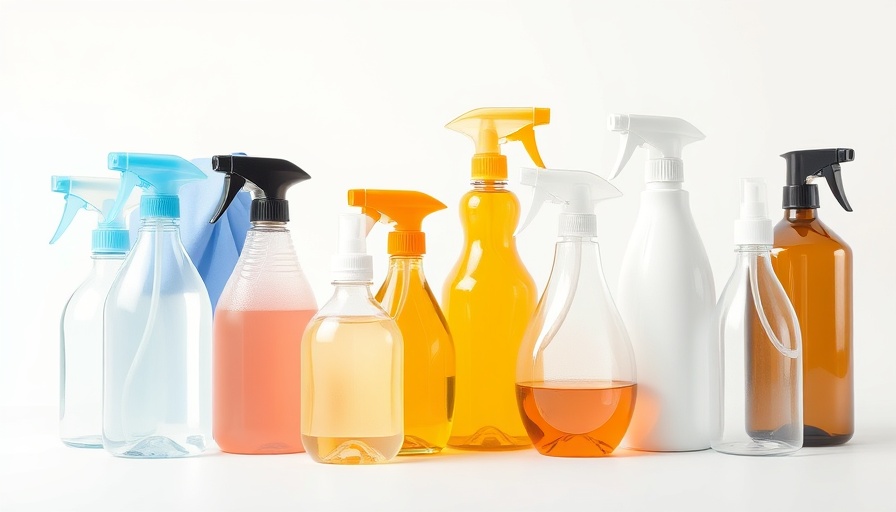
Understanding the Hidden Dangers of Everyday Cleaning Products
In modern society, we often prioritize cleanliness, but recent findings reveal significant risks associated with the cleaning products we routinely use. The U.S. Centers for Disease Control and Prevention (CDC) has taken a notable stand against the use of scented or fragranced products in its buildings, highlighting the escalating concern about indoor air quality and health. According to a review titled Damaging Effects of Household Cleaning Products on the Lungs, harmful respiratory effects linked to cleaning products were first identified among individuals with high workplace exposure, underscoring the urgency of this issue.
The Alarming Connection Between Cleaning Product Use and Respiratory Issues
As early studies indicated that cleaning products could contribute to asthma, more recent research has corroborated these findings, demonstrating a chilling trend: exposure to household cleaning products is now recognized as a risk factor not just for occupational asthma but for childhood respiratory disorders as well. Reports estimate that common household cleaning sprays account for up to one in seven cases of adult asthma, pointing to a pressing need for consumers to reconsider their cleaning choices.
Environmentally Friendly Products: A Safer Alternative?
While conventional cleaning products pose significant health risks, environmentally friendly alternatives may offer a safer solution. Researchers suggest that cleaning products not dispensed as sprays might not carry the same risk, emphasizing a shift towards safer cleaning practices. However, the market still lacks comprehensive regulations ensuring safety, leaving consumers vulnerable until manufacturers heed existing research findings.
The Fragrance Factor: Understanding the Risks
A staggering one in three Americans report adverse health reactions from exposure to fragranced products, including severe migraine headaches and respiratory difficulties. Alarmingly, nearly half of these individuals assert that their health problems have disrupted their work life, illustrating the widespread implications of fragrance chemicals found in everyday products. Notably, compounds like 1,4-dichlorobenzene, often present in air fresheners, pose additional concerns, as they are associated with both diminished lung function in healthy individuals and exacerbated conditions in those already suffering from respiratory issues.
Informed Choices: The Importance of Product Transparency
Despite the potential dangers, there exists a significant gap in consumer awareness regarding the ingredients in fragranced consumer products. In the U.S., manufacturers are not required to disclose all components in their products, with many cleaning products only listing the generic term "fragrance". This lack of transparency raises questions about what consumers are inhaling daily and how those choices impact their health.
Implications for Public Health and Consumer Awareness
The findings surrounding the health risks of cleaning products extend beyond individual harm; they represent a broader public health crisis linked to indoor air quality and safety. As women often comprise the majority of those exposed to these products both at work and home, the issue takes on a social dimension, calling for greater advocacy for safer alternatives and more stringent regulations. Greater awareness could also spur demand for product labels that comprehensively outline all ingredients, empowering consumers to make informed choices about the products entering their homes.
Conclusion: Empowering Change Through Awareness
In light of these revelations, it is essential for consumers to prioritize their health by seeking safer cleaning alternatives, questioning product formulations, and advocating for regulatory changes that demand transparency. Our commitment to clean air and safe living environments starts with informed choices and understanding the products we bring into our homes.
 Add Row
Add Row  Add
Add 



Write A Comment